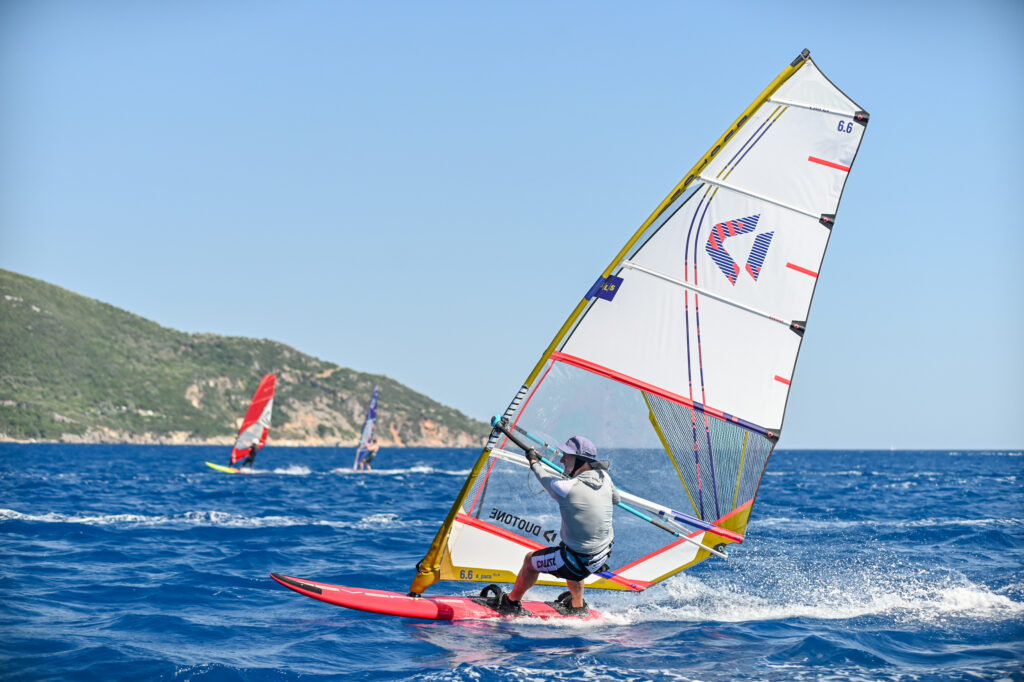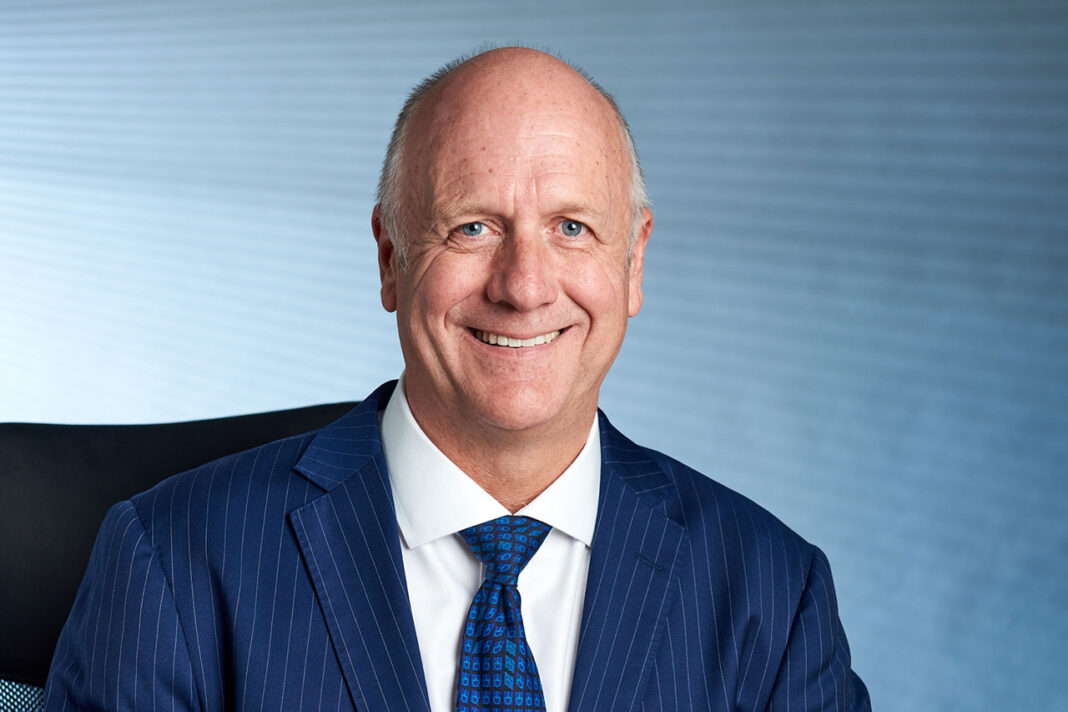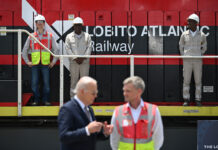Some people are destined to be accountants; others feel they should have a seat on a beach somewhere. Occasionally, there are individuals who get to do both. Enter Ian Murray, possibly one of South Africa’s least heralded mining exports. As well as having mining success, he’s never lost touch with a lifelong passion for windsurfing, acquired on the beaches of East London.
Murray is currently non-executive chair of Jupiter Mines, a Sydney-listed business which has a 49.9% stake in Tshipi, a profitable manganese mine in the Northern Cape. The mine was headline news recently when Exxaro Resources, a Johannesburg-listed coal company, bought a 50.1% stake in Tshipi from Saki Macozoma’s Safika Holdings.
Murray’s major claim to mining fame, however, was as MD of Gold Road, another Australian firm that is currently under bid from Gold Fields. In May, the South African miner offered A$3.7bn for Gold Road, representing a 43% premium to its then share price. If completed, this will represent a major success for Murray who was key to establishing Gold Road’s Gruyere, a gold mine.
Murray started out in the corporate world at Durban Roodepoort Deep (now DRDGold). After serving as its CFO for several years, he left South Africa for Brisbane to manage DRD’s Australasian business. But he found the twice-monthly commute to Johannesburg exhausting.
So he retired in 2004 for two years in order to windsurf and make good on a promise to take his children on a six-month around-the-world holiday. Life in South Africa as CFO was complicated and hard. This was the period in which then CEO of DRD, the late Mark Wellesley-Wood, warred with the late Brett and Roger Kebble. Bullet-proof cars and bodyguards were de rigueur.
It was no way to live, reflects Murray in an interview from Germany where he lives part of the year. DRDGold is now a successful gold retreatment business, but as DRD the long-running enmity between Wellesley-Wood and the Kebbles didn’t truly end until all three died – each of them by means of the gun. It closed the book on one of South Africa’s most colourful and tragic corporate sagas.
Two years into retirement in Australia, Murray was approached by Gold Road’s founders, who had started a company called ElectroMining. Murray liked what he saw but was keen to get the company’s name right. “If you’re exploring for gold, you need to have gold in the name,” he says. “People need to understand from the name what you’re doing.” Gold Road became the full name after the discovery of gold prospects in the Yamarna Belt, about 1,200km north of Perth – a long 12-hour road trip.
The area had been drilled by WMC, the then large Australian miner, but without any success. Murray says it was pure good fortune his geologist struck decent grades. “The geophysicists came up with 15 different targets. Only one delivered. Fortunately, it was the first one we tested, and not the last one,” he says. That was Gruyere, so called because, in another casual approach to naming, Gold Road’s executives were having a cheese and wine while deliberating over the deposit.
Gruyere today is an open-pit mine ramping up to about 350,000 ounces a year in output. Gold Fields’ then CEO Nick Holland leapt at the chance of a joint venture in Gruyere with Gold Road. For its part, Gold Road was only too pleased to accept Gold Fields as a partner. Competing bids sought outright control. In contrast, Gold Fields was happy to accept a 50/50 joint venture and operate the project – the latter a fairly uncontroversial element of any such deal given the South Africans were better resourced, operationally.
It’s arguable whether Gold Fields is now paying heavily for not insisting on a controlling stake given the hefty premium it’s paying for the balance of Gruyere. But Murray doesn’t agree.
“Gold Fields is getting a good price for the underground potential of Gruyere which is not reflected into the market. Gold Road shareholders are also getting a good outcome,” he says. Gold Road used to trade below A$2/share against an offer of A$3.30/share. “It’s a big premium for existing Gold Road shareholders, but I think there’s more upside for Gold Fields,” says Murray.
“In the long term they [Gold Fields] will be happy with this acquisition.”
In any event, Murray got out of Gold Road in 2018 while Gold Fields was building the mine. But he remains a shareholder and is keen to see the takeover completed later this year. The profit he stands to pocket from it – he wisely declines to specify – allows him to pick and choose what he wants to do next.
Citing the advice of former Harmony Gold financial director Frank Abbott, Murray says he decided a long time ago when he didn’t need to work anymore. “I was never going to be like lots of people in this industry who just keep working, working, working. For me, it’s once I got to a certain amount – and it was through Gold Road – I could actually chill out.”
Even while studying accounts at the University of Cape Town Murray somehow managed to park work in order to windsurf. As sponsor-financed he was able to take a full term out to compete on the South African windsurfing circuit. When he got back to UCT he copied a friend’s notes and came first in accounts that year.
Jupiter Mines is a different proposition to Gold Road entirely. The manganese business in South Africa is a highly fragmented industry that, owing to the bulk nature of mining and logistics, ideally favours scale. As non-executive chair of Jupiter Mines, Murray isn’t quite sure how the industry will shake other than to say it must find a way to consolidate and capitalise on scale.
“To make South African manganese world-class, you need to have it at the lowest operating cost, and so you need economy of scale,” says Murray. “It’s bulk mining and so it’s all unit-cost-driven. So if there can be consolidation with the agreement of the South African government, you can really increase or improve the mining practices.”

That’s easier said than done. Kalagadi Manganese is a distress asset but shareholders and its main banking partner, the Industrial Development Corporation, are embroiled in legal action. Then there’s Samancor Manganese, a joint venture between Anglo American and South32. On paper, both companies are potential sellers.
In the case of South32, its outgoing CEO Graham Kerr has made his disaffection for the group’s legacy assets (from its BHP demerger) as well as SA fairly well known. South32 recently sold its Colombian nickel assets, and previously closed aluminium facilities in SA as well as its energy coal mines. Anglo, however, has an option to veto the sale.
While in a phase of streamlining – Anglo has sold its nickel and metallurgical coal mines and demerged its platinum unit, Amplats – it might yet be reticent to quit the resource-rich manganese fields of SA. One view is that Anglo sees its manganese holdings as a means of marshalling South African support should an international predator seek its takeover, as BHP sought to do last year.
And then there’s Exxaro. The company sees itself as a consolidating force in South Africa’s manganese industry but fresh from the purchase of 50.1% in Tshipi (the Safika deal), its new CEO Ben Magara played down the further dealmaking in the short term. Significantly, Jupiter is also interested in consolidating the sector, a position it made clear in 2023 and reiterated earlier this year.
For Murray, Tshipi is simply an underutilised asset. “It’s got this five- or six-million-ton-a-year rail loadout capacity which is world-class of which we’re using one and a half million. So there’s a lot of waste capacity there.”
The reason for this is it’s constrained by an agreement with Transnet known as the manganese export capacity allocation that limits it to 1.8mt in exports a year versus its 3.5mt/year production and sales.
While it’s impossible to say how Jupiter will play its part in consolidating manganese, it might be worth reflecting on Murray’s track record for keeping it simple. Do a good deal. And move on.




